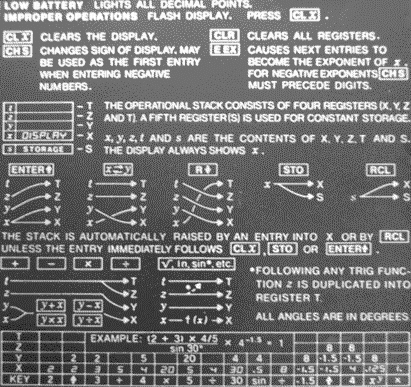The HP 35s uses an operational stack of four registers, called X, Y, Z and T and LASTx. In RPN mode, these registers are used to hold values for computations. These four stack registers are easily accessed using keys whether in a program or in normal computations.
In algebraic mode, these registers hold results from previous calculations.
The HP35 4 level stack implementation:
T register
Z register
Y register
X register
The display of the calculator always shows the X register.
The ‘ENTER’ key is provided to duplicate a number in X register into Y register. At the same time Y is copied into Z register and Z into T (for top).
When a 2 operand (‘dyadic’) operation is applied, the stack drops displaying the result in X ; Z drops to Y and T is copied into Z and keep its value.

The HP 35s have a LAST X register which preserves the number that was in X before the last numeric operation. Press the LAST X key to place a copy of the previous contents of X into the X register.You can use LAST X as a constant register or to recover from mistakes.
HP 35s Direct and Indirect Registers
The HP35s also contains registers or variables that can be referenced directly. These are Variables A through Z which can be directly addressed. [STO] A to Z.
There are 801 of Indirect Registers available. The indirect registers begin at address 0 and can go up to 800.
Tutorial showing how to use HP 35s Direct and Indirect Registers - PDF.